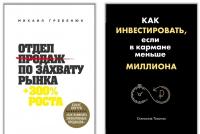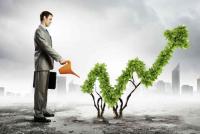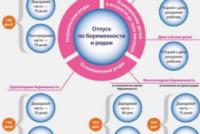The assets of the organization in the sphere of circulation include. Working capital of the enterprise. According to the types of current assets, there are
For the production of products, only the means of labor (machines, devices, equipment) are not enough. In addition to them and the labor of the employees of the enterprise, the source material, raw materials, blanks are also needed - that from which the finished product is created in the production process - objects of labor. And in order to be able to buy these items of labor from suppliers and pay for the labor of workers, the enterprise needs money. The objects of labor and monetary resources together form current assets of the enterprise. Management, determining the optimal size, writing off working capital for production - all these are important and pressing issues for any enterprise. You will find answers to them and indicators of working capital in this article.
Working capital: concept, composition and role in production
working capital- this is the funds of the enterprise advanced in circulation funds and circulating production assets.
working capital- this is the valuation of circulation funds and circulating production assets.
The main purpose of working capital is ... make a turn! In the course of such a process, working capital changes its material and material form into a monetary one, and vice versa.

The circulation of working capital of an enterprise: money - goods, goods - money.
For example, an enterprise has some cash that it spends on the purchase of raw materials and materials. This is the first transformation: money (not necessarily cash) was transformed into material objects - stocks (parts, blanks, material, etc.).
The inventory is then processed through the manufacturing process, moving into work in progress (WIP) and eventually becoming finished goods. These are the second and third transformations - stocks have not yet turned into cash for the enterprise, but have already changed their form and role.
And finally, the finished product is sold to the outside (sold to consumers or resellers) and the company receives cash, which can again spend on the purchase of resources to resume the production process. And everything is repeated for the second round. This is the fourth conversion of finished products into cash.
Working capital turnover is the most important indicator. The faster the company's funds are turned over, the smaller the time gap between investments in production and getting a return - revenue (and with it profit).
It is important that the current assets of the enterprise, unlike fixed assets, participate in the production cycle only once and at the same time fully transfer their value to the finished product! This is what is mainly different and working capital.
The composition of working capital includes various groups of objects of labor and cash. On an enlarged basis, they are all divided into two large groups: circulating production assets and circulation funds. More about them below.
Composition of working capital:
- Revolving production assets
- include in their composition:
a) production (warehouse) stocks- objects of labor that are still awaiting entry into production. Include:
- raw materials;
- basic materials;
- purchased semi-finished products;
- accessories;
- auxiliary materials;
- fuel;
- container;
- spare parts;
- fast-wearing and low-value objects.b) stocks in production- objects of labor that have entered production, but have not yet reached the stage of finished products. Inventories in production include the following types of working capital:
- work in progress (WIP) - processed products that have not yet been completed and have not arrived at the warehouse of finished products;
- deferred expenses (DPC) - the costs that the company incurs at the moment, but they will be written off to cost in the future period (for example, the costs of developing new products, creating prototypes);
- semi-finished products for own consumption - semi-finished products (for example, spare parts) produced by the enterprise exclusively for internal needs. - circulation funds
- these are the means of the enterprise associated with the sphere of circulation, that is, with servicing the turnover.
The circulation funds consist of the following elements:
a) finished product:
- finished products in stock;
- shipped products (goods on the way; products shipped, but not yet paid).b) cash and settlements:
- cash on hand (cash);
- cash on a current account (or on a deposit);
- earning assets (funds invested in securities: stocks, bonds, etc.);
- accounts receivable.
The percentage ratio between individual groups or elements of working capital is working capital structure.
For example, in the manufacturing sector, the share of circulating production assets is 80%, and circulation funds - 20%. And in the structure of production reserves in industry, the first place (25%) is occupied by basic materials and raw materials.
The structure of working capital of an enterprise depends on the industry, the specifics of the organization of production (for example, the introduction of the same logistics concepts greatly changes the structure of working capital), supply and marketing conditions, and many other factors.
Sources of formation of working capital of the enterprise
All sources of working capital of the enterprise can be divided into three large groups:
- - their size is set by the company itself. This is the minimum amount of stocks and funds sufficient for the normal functioning of production and sales, timely settlements with counterparties.
Own sources of working capital formation:
- authorized capital;
- Extra capital;
- Reserve capital;
- accumulation funds;
- reserve funds;
- depreciation deductions;
- retained earnings;
- other.An important indicator here is own working capital or, in other words, the working capital of the enterprise.
Own working capital (working capital) is the amount by which the company's current assets exceed its short-term liabilities.
- Borrowed working capital– cover the temporary additional need for working capital.
As a rule, the borrowed source of working capital here are short-term bank loans and borrowings.
- Attracted working capital- they do not belong to the enterprise, they are received from outside, but are temporarily used in circulation.
Attracted sources of working capital: accounts payable of the enterprise to suppliers, wage arrears to employees, etc.
Determining the needs of the enterprise in its own working capital is carried out by him in the process of rationing.
In doing so, it calculates working capital ratio according to one of the special methods (direct counting method, analytical method, coefficient method).
This is how the rational volume of working capital used in the sphere of production and the sphere of circulation is determined.
Methods for writing off working capital to production
To write off the working capital of the enterprise in production can be in various ways, each of which has its own advantages and disadvantages. Basic Methods :
- FIFO Method(from the English “First In First Out” - “first in, first out”) - stocks are written off to production at the price of those stocks that arrived at the warehouse first. At the same time, within the framework of the FIFO method, it does not matter how much the working capital written off to production actually cost.
- LIFO Method(from the English “Last In First Out” - “last in, first out”) - stocks are written off to production at the price of those stocks that arrived at the warehouse last. With the LIFO method, the cost of the written-off inventory is also not important, since they will be taken into account at the price of the last ones received at the warehouse.
- At the cost of each unit- that is, each unit of working capital is written off to production at its cost (so to speak, "by the piece").
An example of an inventory write-off using this method: accounting for jewelry, precious metals, etc.
- By average cost- the average cost is calculated for each type of inventory and the inventory is written off to production according to it.
At Russian enterprises, this is perhaps the most common practice.
The optimal amount of working capital
One of the most important questions is the definition the optimal amount of working capital, such as inventory levels. To find the optimal working capital of the enterprise, special methods are used (ABC analysis, Wilson model, etc.). The solution to this problem is the theory of inventory management and logistics (for example, the concept of "Just-in-time" seeks to minimize inventory to almost zero).
The optimal amount of working capital- this is their level at which, on the one hand, an uninterrupted process of production and its implementation is ensured, and on the other hand, additional and unjustified costs do not arise.
At the same time, both large and small working capital of the organization (stocks) have their pros and cons.
Large amount of working capital (pluses and minuses):
- ensuring an uninterrupted production process;
- Availability of safety stock in case of failures in deliveries;
- purchasing stocks in large quantities allows you to get discounts from suppliers and save on transportation costs;
- the opportunity to win when prices rise due to the advance purchase of resources at a lower price;
- large amounts of money allow you to pay suppliers in a timely manner, pay taxes, etc.
- large stocks - a high risk of spoilage;
- the amount of property tax increases;
- the costs of maintaining stocks are growing (additional storage space, personnel);
- immobilization of working capital (in fact, they are “frozen, withdrawn from circulation, do not work).
Small amount of working capital (pluses and minuses):
- minimal risk of damage to stocks;
- costs for the maintenance of stocks are reduced (less storage space, personnel and equipment are required);
- acceleration of the turnover of working capital.
- the risk of production failures due to untimely deliveries (because then the warehouse simply does not have the required amount of stock);
- an increase in the risks of untimely settlements with suppliers, creditors, and the tax budget.
Turnover ratio and working capital turnover
The efficiency of the use of working capital and their condition can be analyzed using indicators such as the turnover ratio (current assets ratio) and turnover.
Working capital turnover ratio(K vol.) - a value showing how many full turnovers were made by working capital for the analyzed period of time.
The turnover ratio of working capital is calculated (a tautology is obtained, but what can be done) as the ratio of the volume of products sold to the average value of the company's working capital for the year. That is, this is the value of sales per 1 ruble of working capital:

where: K about. - turnover ratio of working capital;
RP - sold products for the year (annual revenue from sales), rubles;
OBS avg. - the average annual balance of working capital (according to the balance sheet), rub.
turnover(T vol.) - the duration of one complete revolution in days.
The turnover of working capital is calculated according to the following formula:

where: T about. - turnover of working capital, days;
T p. - the duration of the analyzed period, days;
K about. - turnover ratio of working capital.
Turnover acceleration allows you to involve additional funds in circulation, increase the return on their use, reduce the period between investment and profit.
Turnover slowdown- a sign of "freezing" of resources, their "stagnation" in stocks, work in progress, finished products. Accompanied by the diversion of funds from circulation.
Let's summarize. Working capital is the most important component of economic activity, without which it is simply not possible to manufacture products and sell goods to consumers. This is a kind of "blood" in the "organism" of the enterprise, feeding its "organs" (workshops, warehouses, services). And the efficiency of working capital, the efficiency of their use, has a huge impact on the economic performance of the company.
Galyautdinov R.R.
© Copying material is allowed only if you specify a direct hyperlink to
II. current assets;
I. Basic (non-current) assets;
Classification of economic assets of the enterprise according to their types and location.
According to the placement of economic assets are divided into:
Means in the sphere of production;
Funds in the sphere of circulation.
1. Means in the sphere of production:
Features of objects of labor:
- consumed during one production process;
- lose their natural form;
- transfer all their value to a new finished product.
Features of the means of labor:
Duration of operation (more than a year);
retain their natural material form;
transfer in parts their cost to the cost of finished products (in the form of depreciation).
2. Funds in the sphere of circulation:
Turnover is understood as a period of time during which the money invested in funds is returned in full through the implementation process. For example, materials were purchased for the purpose of manufacturing products. The money invested in these materials will be returned after the manufactured products are sold to customers.
This group includes those funds of the enterprise that can be converted into cash in the near foreseeable future (usually up to one year):
Finished products (i.e. the result of production);
Goods (purchased for the purpose of resale of material values);
goods shipped (products of the enterprise shipped to the buyer, but the ownership of which still remains with the seller);
funds in settlements (various types of debts of third-party organizations and individuals to the enterprise);
cash (may be in cash and kept at the cash desk of the enterprise, or in a non-cash form and kept in a bank).
Grouping of economic assets by types can be made:
I . Fixed (non-current) assets are the economic assets of the enterprise used for more than a year in order to generate income. These include:
fixed assets;
intangible assets;
profitable investments in non-current assets;
capital investments;
Long-term financial investments.
1. fixed assets - the most important element of the production process. Fixed assets are considered to be the means of labor used to produce products or manage an enterprise, bringing economic benefits and with a service life of more than one year.
Classification takes place according to the following criteria:
1) by type:
buildings (to ensure the production process);
structures;
transmission devices;
· cars and equipment:
Power machines and equipment;
Working machines and equipment;
Computer Engineering;
Other machines and equipment.
vehicles, etc.
2) by functional purpose:
production fixed assets;
non-production fixed assets (non-production sphere);
3) by industry:
fixed assets of the industry;
fixed assets of agriculture;
· fixed assets of construction, etc.
4) according to the degree of use:
operating;
inactive;
preserved;
· on lease.
5) by accessories:
own;
rented.
For fixed assets, depreciation is charged, which is charged monthly for individual objects and is included in the costs of production or circulation.
Land is also a fixed asset. It does not include depreciation.
There are three options for valuation of fixed assets:
at initial cost (based on the actual costs of acquiring fixed assets);
replacement cost (the cost of reproduction of fixed assets - the acquisition or construction of an object, based on current prices, the level of development of technology and technology). It is determined through the revaluation of fixed assets using the established conversion factors;
residual value: the initial (replacement) cost minus the accrued depreciation.
2. Intangible assets - an integral part of the economic assets of the enterprise. These include objects that do not have a material form, which can be separated from other property, used in the production of products for more than 12 months and provide an opportunity to receive income for a long time. This group includes:
• rights to use land and natural resources;
· patents and licenses;
Trademarks and trade marks;
· computer software;
organizational expenses.
In accounting, they are valued at historical cost, i.e. in the amount of acquisition costs, for consultations and taking into account the costs of marketing research.
Depreciation is charged on intangible assets, which is charged monthly for individual objects and is included in production or distribution costs.
Intangible assets come to the enterprise in three directions:
contribution to the authorized capital in the amount of the value specified in the contract;
acquisition from other enterprises or persons in the amount of value, based on actual costs;
· gratuitous receipt from other enterprises or persons.
Posting of intangible assets is carried out on the basis of the relevant documents:
certificates for the right to use;
· patents;
· certificates of acceptance of work on software development, etc.
3. Profitable investments in non-current assets - investments in part of the property, buildings and other valuables provided by the enterprise for a fee for temporary use to other legal entities and individuals.
4.Capital investments – investments in facilities that will subsequently be accepted as fixed assets, intangible assets (costs of acquisition, construction, design and survey work, etc.).
5.Long-term financial investments – investments of an enterprise for a period of more than 1 year in government securities (bonds and other debt obligations), securities and authorized capital of other enterprises, granting loans to other enterprises.
They are characterized by a relatively high speed of circulation.
This section reflects:
1) Stocks:
Raw materials and basic materials
Auxiliary materials
· fuel
Spare parts for repairs
Semi-finished products and components
inventory and household supplies
All of them are accounted for at actual cost.
2) Unfinished production - products started by processing in production, but not finished.
3) Future expenses - expenses incurred in the reporting period and attributable to the expenses of subsequent periods (subscription, preparation and development of production, rent paid in advance). These costs are written off to the cost price evenly throughout the entire period.
4) Finished products - products that are fully processed, passed control and acceptance and fully completed according to the contract. Accounting is carried out at actual cost.
5) Products - tangible assets acquired specifically for sale.
6) Goods shipped - finished products shipped to customers, but not yet paid for by them.
7) Accounts receivable (debtor - debtor). It includes:
debts of buyers for products, goods and services;
Debt of employees of the enterprise on accountable amounts;
Debt on other settlements (on claims against suppliers).
8) Cash . They come mainly for products sold:
· Checking account
・Currency current account
special bank accounts
· Transfers on the go
· Financial investments (shares and shares, granted loans, etc.)
· Provisions for depreciation of investments in securities.
All organizations, regardless of their form of ownership, pay taxes. Types of taxes: income taxes, value added taxes (VAT), personal income tax, property tax.
Objects of taxation.
1. The object of taxation is the sold finished products, as well as received material assets from suppliers (source).
2. The object of taxation is the material assets received from suppliers, as well as the material assets sold to suppliers and buyers.
3. The object of taxation is the income of an individual according to the accrued salary.
4. The object of taxation yavl. fixed assets, intangible assets, etc.
Classification of economic means of the enterprise.
All economic assets in accounting are divided into 4 groups:
1.Fixed assets and investment.
2.Working capital.
3. Abstract funds.
4. Intangible assets.
fixed assets
This property is worth 10 thousand per unit. Fixed assets are involved in the production process for a long time and constantly transfer their value to the finished product. Fixed assets are used in the sphere of production, in the sphere of circulation and outside the production sphere.
The manufacturing sector includes: workshop buildings, working machines and equipment, vehicles, production equipment.
The area of circulation includes
: trade equipment, warehouse buildings for finished products and shops.
Non-manufacturing areas include:
houses, stadiums, libraries, gardens.
Working capital.
This group is divided into 2 subgroups:
1. Working capital of the production sector.
2.Working capital in the sphere of circulation. Circulating assets in the sphere of production are objects of labor that once participate in the production process and fully transfer their value to the finished product.
The objects of labor are what the product is made from. .
Working capital in the manufacturing sector includes
: raw materials, gasoline, kerosene, coal, containers and container materials, auxiliary materials, main production.
The area of circulation includes
: items of circulation, finished products and products shipped to customers, cash (which are on settlement accounts and at the cash desk. Commodity-shipped products are products that are on the way from the manufacturer to the consumer. Funds in the calculations - this reflects the debt of enterprises that received products from our organization, but did not pay, and individuals who received an advance from the cash desk account for the acquisition of material assets in accounting - this fact is called accounts receivable
Debtors owe us.
Abstract means
These are funds temporarily or permanently withdrawn from the turnover of the enterprise (payment for taxes, and payment to suppliers in advance), as well as deductions from profits to various funds and reserves.
Intangible assets
This is the cost of KNOW-HOW (secret development), exclusive copyright for computer programs, business reputation of the company (it arises as a result of the acquisition and sale of the company).
A significant amount of financial resources invested in current assets, the variety of their types, the determining role of these assets in accelerating the turnover of capital and ensuring the solvency of the company determine the importance and complexity of the current asset management policy.
Current assets of the company- a set of funds advanced to create working capital and circulation funds, ensuring their continuous turnover. In practice, the composition and structure of current assets are distinguished.
Composition of current assets - a set of elements that form them (Fig. 6.1).
Current assets in the field of production (current production assets) include objects of labor (raw materials, basic materials and semi-finished products, auxiliary materials, fuel, containers, spare parts), work in progress and deferred expenses. The main purpose of current assets in the field of production is to ensure continuous and rhythmic production process.
Current assets in the sphere of circulation (circulation funds) - the company's funds invested in stocks of finished products; goods shipped but not paid for; funds in settlements and cash on hand and in accounts. Their main purpose is to provide resources for the circulation process
Current assets structure - the share of each element of current assets in their total volume. It depends on a number of factors:
Production - the composition and structure of production costs, its type, the nature of products, the duration of the technological process, etc.;
Features of procurement of material resources - frequency, regularity, completeness of supplies, mode of transport, specific weight of components in the volume of consumption, etc.;
Rice. 6.1. The composition of the company's current assets
Forms of settlements with suppliers and buyers of goods;
Demand for the company's products, which affects the volume of finished products in stock and receivables.
During the formation of market relations, the structure of current assets of Russian companies in the real sector of the economy deteriorated significantly (Table 6.1).
The share of receivables increased (especially overdue and doubtful debts). The share of the production component - stocks of raw materials, materials, work in progress, finished products - has sharply decreased.
Due to the large amount of receivables from buyers, a significant part of the advanced working capital is returned to the company with a big delay or is not returned at all. It should be noted that in recent years there has been a positive trend towards a decrease in the share of receivables.
In the practice of planning, accounting and analysis, current assets of companies are grouped according to the following main features:
By the nature of the sources of formation;
By type;
Depending on the functional role in the production process;
Depending on the practice of control, planning and management;
According to the period of operation;
In terms of liquidity.
According to the nature of the sources formations allocate gross, net and own current assets.
Gross current assets (or current assets in general) characterize their total volume formed at the expense of both own and borrowed capital.
Net current assets (or net working capital) characterize that part of their volume, which is formed at the expense of own and long-term borrowed capital.
The amount of net current assets of the company (OA H) is calculated using the following formula:
OA Ch= OA V - F ok,(6.1)
where OA in - the amount of gross current assets of the company; F ok - short-term current financial obligations of the company.
This indicator characterizes the value of the need for own working capital or, more precisely, the need for financing working capital, associated with the excess of current assets over short-term liabilities. For the normal provision of economic activity with current assets, the value of net current assets is set within "/ 3 of the value of equity.
Own current assets characterize that part of them, which is formed at the expense of the company's own capital.
The amount of own current assets of the company (OA C) calculated by the formula:
OA C \u003d OA B - K ZD- f ok,(6.2)
where K ZD long-term borrowed capital invested in current assets.
Note that long-term borrowed capital in relation to Russian companies is rarely used as a source of financing current assets. And therefore, the amounts of own and net current assets most often coincide.
According to the types of current assets, there are:
a) stocks of raw materials, materials and other similar valuables;
b) costs in work in progress;
c) stocks of finished goods and goods for resale;
d) goods shipped;
e) deferred expenses;
f) accounts receivable;
g) short-term financial investments;
h) money;
i) other types of current assets.
Depending on the functional role in the production process allocate:
a) current assets serving the production cycle of the company (stocks of raw materials, materials and semi-finished products; the volume of work in progress, stocks of finished products);
b) current assets serving the financial (cash) cycle of the company (accounts receivable, short-term financial investments, cash);
Depending on the practice of control, planning and management distinguish:
Normalized working capital, making it possible to calculate the economically justified need for the relevant types of working capital;
♦ non-standardized working capital, which is an element of circulation funds.
Differentiation of current assets on this basis is presented in table. 6.2.
Table 6.2 Differentiation of assets depending on control practices






